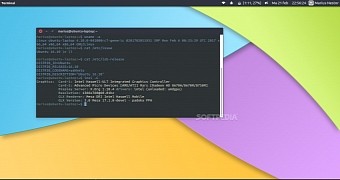Now that Linux kernel 4.10 is out, and because some of you have asked for a tutorial on how to install it on your Ubuntu Linux operating system, we thought it would be a good idea to show you guys the easiest and safest method.
First of all, the big question: why should you upgrade to Linux kernel 4.10? Well, you shouldn't upgrade if everything runs smoothly on your Ubuntu PC and all your hardware works out of the box, but you should upgrade if you currently have issues with some of your hardware components.
There's another problem involved in the upgrade of the kernel packages, such as the fact that some things might not yet support the Linux 4.10 kernel, VirtualBox will no longer work, nor the proprietary AMDGPU-PRO graphics drivers because they don't yet support Linux kernel 4.10.
So if the above represents an issue for you, then you should stop reading and enjoy what you already have until Linux kernel 4.10 becomes supported by all drivers and apps that need it. On the other hand, if you rely on the open-source graphics drivers, Linux kernel 4.10 brings many improvements for Intel and AMD Radeon GPUs.
We've upgraded one of our Ubuntu machines running Yakkety Yak (Ubuntu 16.10), which used the Linux 4.8 kernel by default, to Linux kernel 4.10 and the bleeding-edge Mesa 17.1-git graphics stack from the Padoka PPA, and the result is that many games run smoothly now with an AMD Radeon HD 8xxx graphics card.
Here's how to install Linux kernel 4.10 on Ubuntu
The following instructions are only for those running the Ubuntu 16.10 (Yakkety Yak) or Ubuntu 16.04 LTS (Xenial Xerus) operating systems. If you're using Ubuntu 16.04 LTS and you already managed to update it to the latest point release, namely Ubuntu 16.04.2 LTS, you should have the same Linux 4.8 kernel as those who run Ubuntu 16.10.
Without any further ado, go ahead and download either the generic or low-latency kernel (including the headers) for your architecture (e.g. linux-image-4.10.0-041000-generic_4.10.0-041000.201702191831_amd64.deb if you're running Ubuntu on a 64-bit PC) from http://kernel.ubuntu.com/~kernel-ppa/mainline/v4.10/.
These are the official kernel packages of Ubuntu, created by Canonical's engineers, so they've been tested on the current daily builds of Ubuntu 17.04 (Zesty Zapus). Save the files in your Home directory or create a new folder and put them there. Open the Terminal app in that location and run the following command.
sudo dpkg -i *.deb
Wait for the kernel packages to be installed, which could take a few minutes, and then reboot your computer. If you see any error, you should run the "sudo apt install -f" command, which should resolve any dependency issues. That's it! You're now using the Linux 4.10 kernel on your Ubuntu PC.

 14 DAY TRIAL //
14 DAY TRIAL //